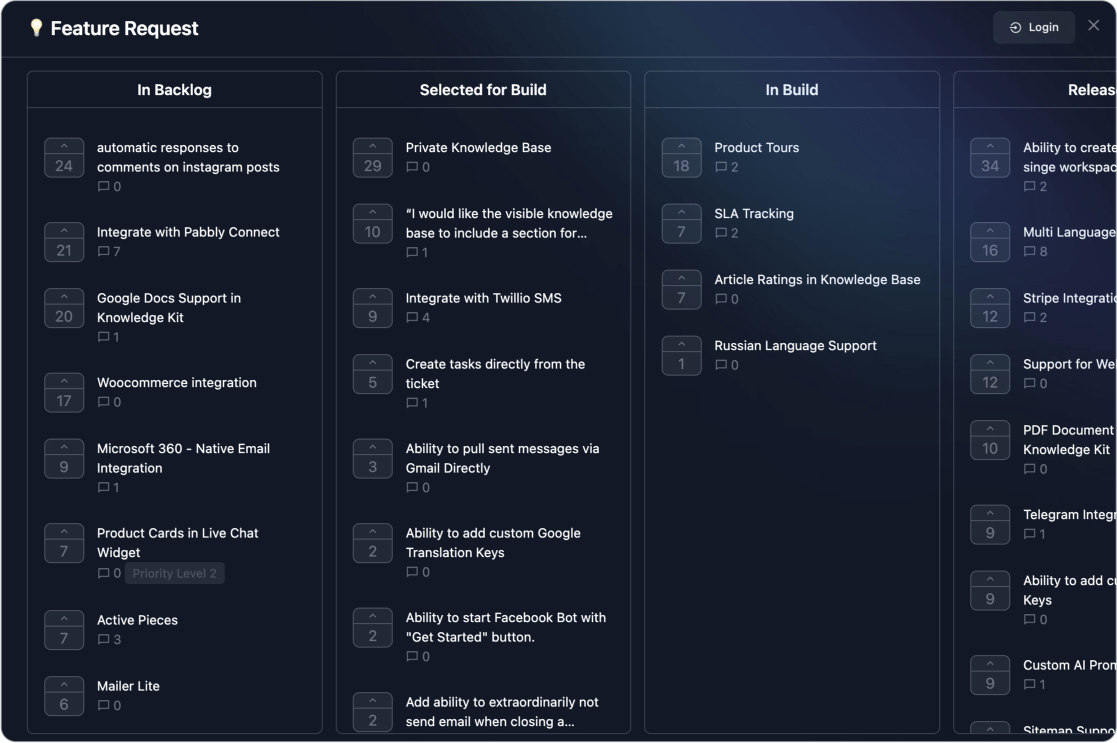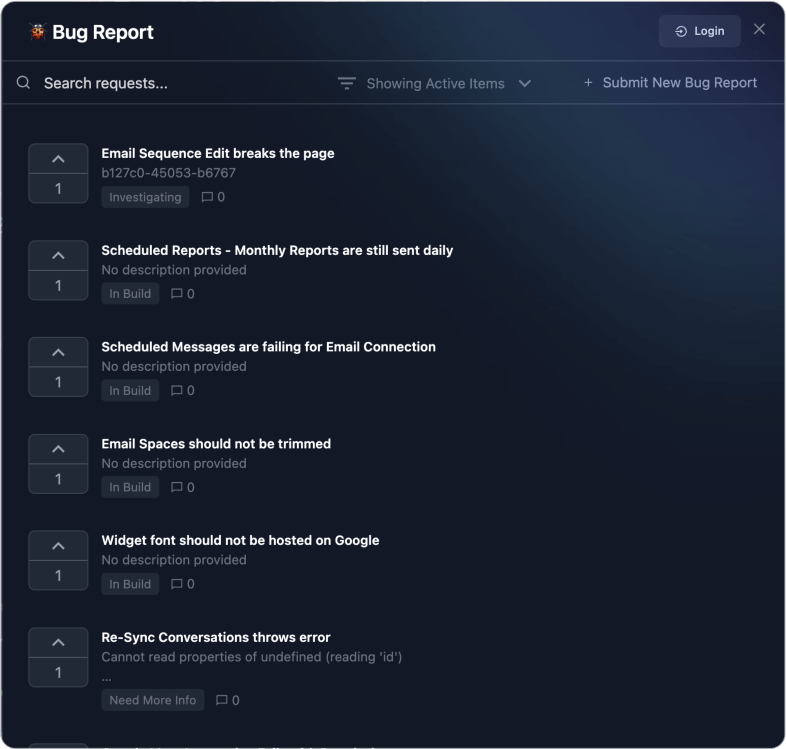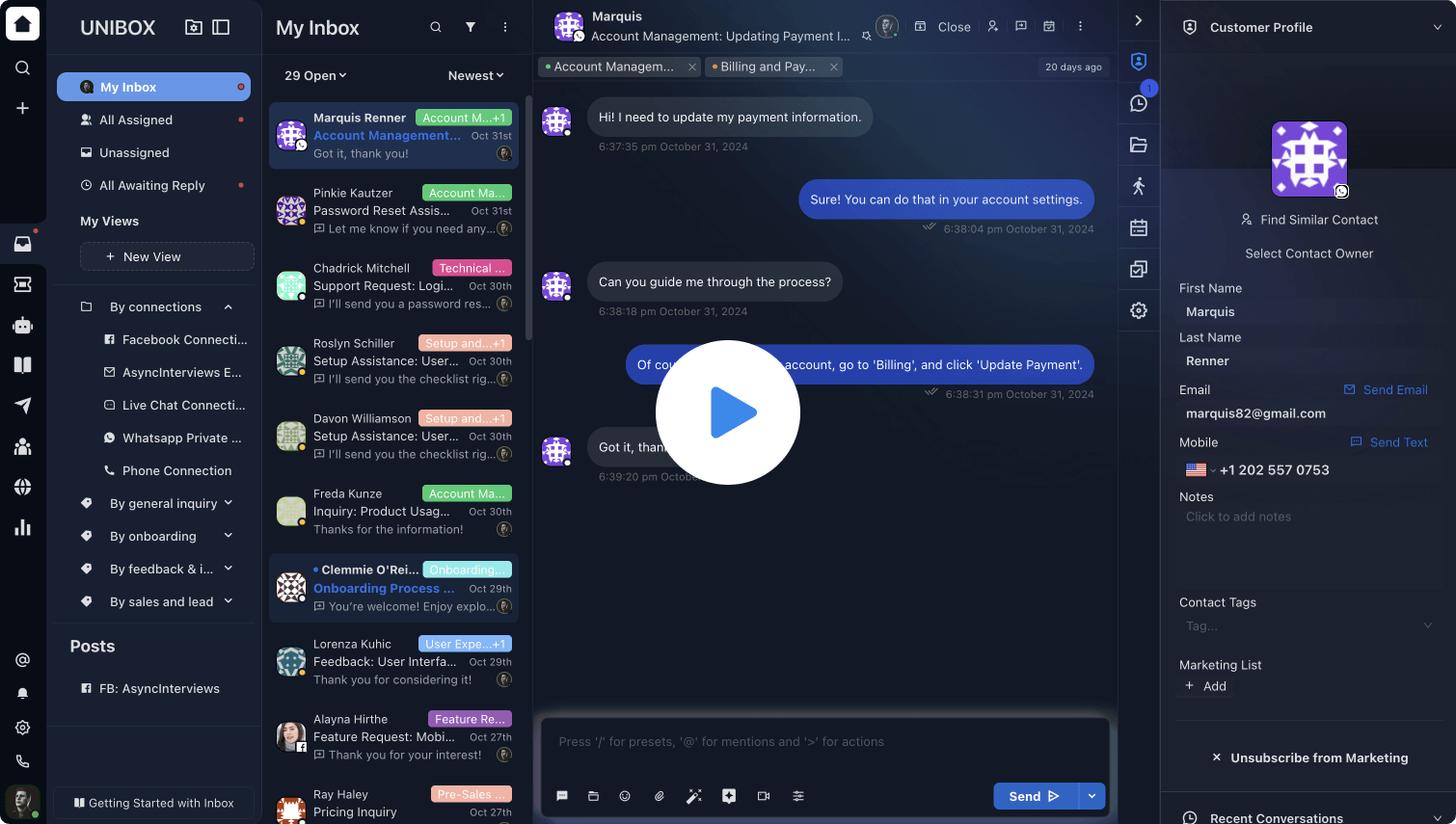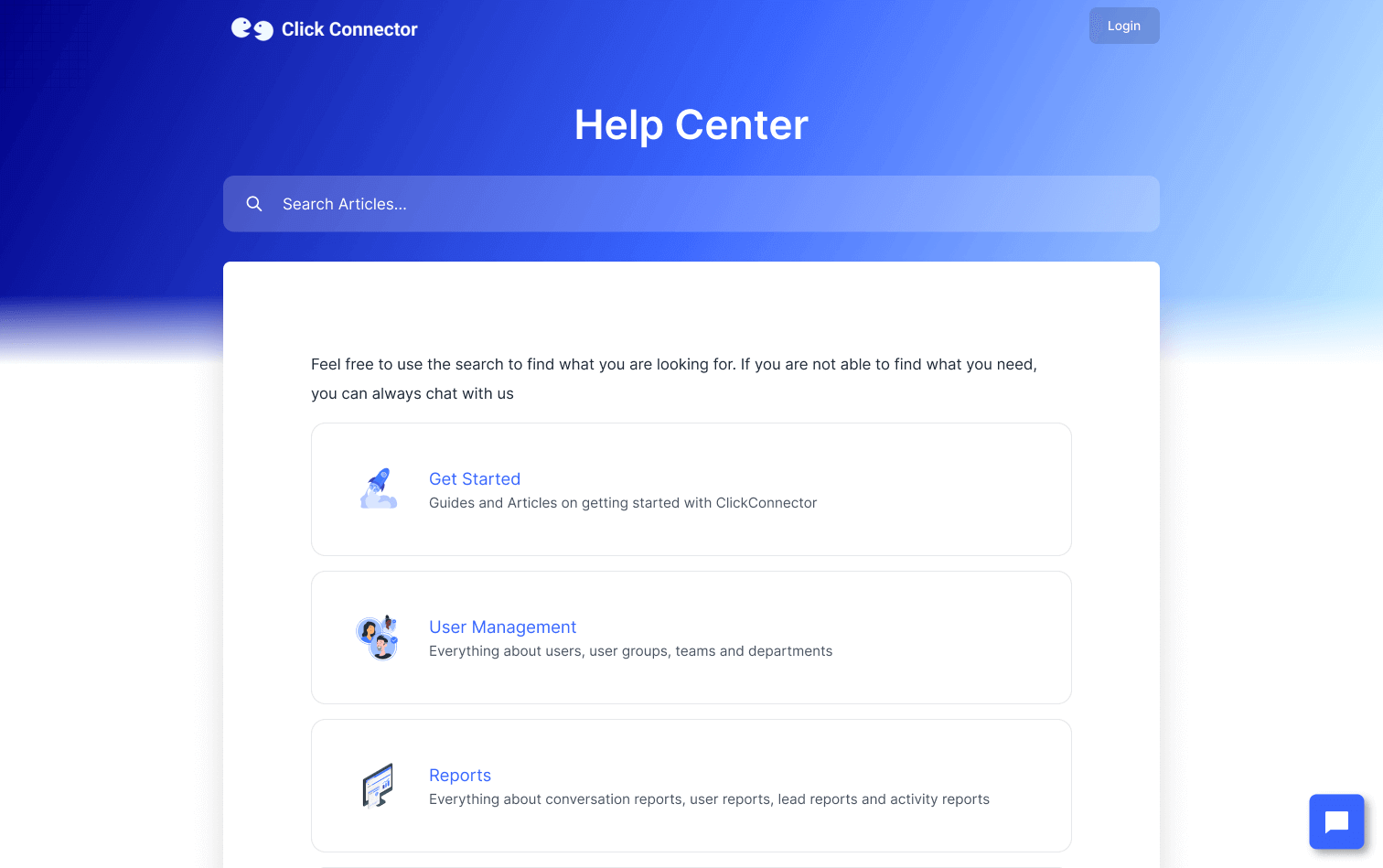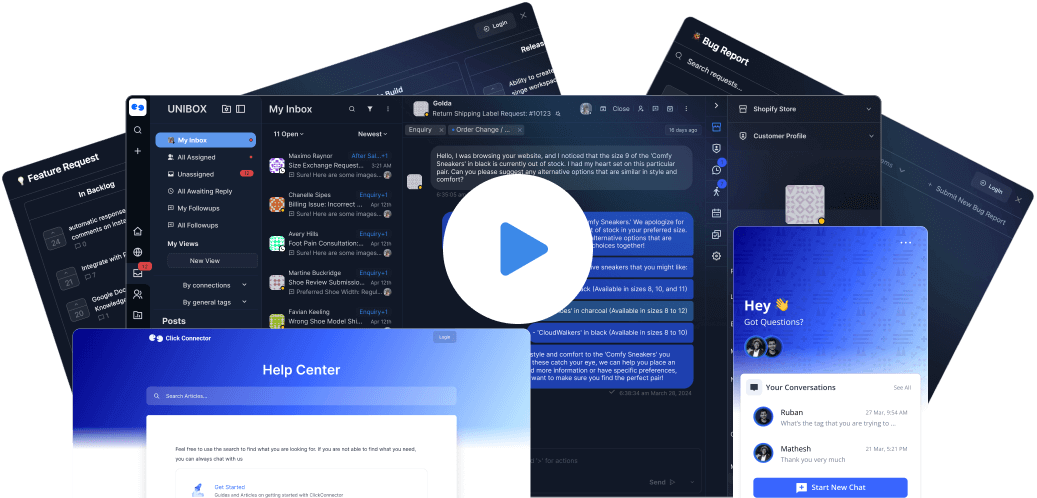10 Minutes a day is all you need to provide 24/7 Customer Support
Here's a 15-minute read that will guide you through spending 4 hours setting up your customer support platform, enabling you to handle customer support in just 10 minutes a day. In this post, I'll delve into how to set up your customer operations and what your daily 10-minute routine might look like.
I have onboarded over 2,000 users to our SaaS platform and learned quite a bit about customer support that I want to share with my fellow SaaS product community. If you have further suggestions, you can drop me a DM at @ragularuban on X (formerly Twitter).
🎓 Understanding Customer Support: A Strategic Approach
Customer support is more than just replying to messages. To truly understand it, you need to view it through several lenses:
- Phases of Customer Support
- Discovery Phase: When customers are learning about your product.
- Onboarding Phase: When customers are starting to use your product.
- Usage Phase: When customers are actively using your product.
- Types of Customer Support
- Reactive: Responding to customers' inquiries.
- Proactive: Anticipating customer needs and addressing them upfront
- Goals of Customer Support
- New Sales
- Retention
- Upselling
To better understand, let's reorganize these concepts for a clearer view: a framework to understand the goals and help us set up customer support operations.

Discovery Phase
- Goal: New Sales
- Types of Support:
- Proactive: Engaging customers on pricing pages.
- Reactive: Answering pre-sale queries.
Onboarding Phase
- Goal: Retention
- Types of Support:
- Proactive: Product tours, onboarding checklists, and welcome emails.
- Reactive: Assisting with setup and troubleshooting.
Usage Phase
- Goals: Retention and Upselling
- Types of Support:
- Proactive: Sharing guides, announcing updates, and highlighting industry trends.
- Reactive: Resolving occasional issues.
With this view, we can identify the tools and softwares that we need to set things up.
Setting Up Your Support Infrastructure
There are numerous customer support tools and software options available for various aspects of customer support. Here are the essential tools we've identified for setting up world-class customer support operations—whether you're a one-person team or a 100-person team.

Tools
✅ AI Assistant you can control: Eg: Zendesk/Intercom
✅ A Tool for setting up public knowledge base
✅ A Tool for setting up product tours: Eg: AppCues
✅ A Tool for setting up onboarding emails (drip campaigns):Eg: Mailchimp, Active Campaign
✅ A Tool for sending emails:Eg: Mailchimp, Send in Blue
✅ A Tool for publishing changelogs
✅ A Tool for managing feature requests and bug reports:Eg: Canny
✅ An integration tool for all the aboveEg: Zapier
Or
You just need ClickConnector ✨
The complete Customer Support Platform built for SaaS Products
Customer Support in Discovery Phase of your Product
Your website is your primary source of customer knowledge. Keep it simple, readable, and follow standard patterns where possible. A word of advice: Don't innovate too much on your website structure—it may just confuse people.
In an ideal world, customers perceive your brand, click on the CTA button, and sign up immediately. However, this rarely happens right away. Customers often research outside your website and may take days to explore competitors. During this buying process, they may have questions—a support widget on your website is a great idea.
Here are a few important points to consider when picking/designing your support chat widget.
- 🤖 AI chatbots are valuable, but don't present your live chat widget as purely AI-driven—this might give the impression that human support is unavailable when needed.
- 🥷 Be cautious of crawling bots designed to repeatedly click and initiate chats with brands. Ensure your live chat widget is secure against bots and hackers.
- 👻 Implement a mechanism to filter out time-wasters who aren't your ideal customers.
- ⏱️ Customers dislike long waiting times. If a human is handling the chat and there's a delay, keep customers informed—don't leave them in the dark!
- 🛟 Adopt a hybrid support approach. Leverage AI to provide instant replies when possible, and seamlessly hand over chats to the human support team when AI can't provide further assistance.
While the above points are crucial, the following are the "icing on the cake" that could give your brand a better impressions. My mantra about SaaS products is “Use every opportunity to delight your customers!”
- 💡Show that you have a help center filled with resources
- 💡Display your product uptime
- 💡Make demo videos directly accessible
- 💡Give Proactive Support
- Eg:
- Invite customers to chat if they're on the pricing page or similar pages
- Invite them to chat if they've browsed 2-5 pages
- Eg:
These tactics ensure your customers have a great experience and form a positive impression of your brand during the discovery phase.
💡 ClickConnector's Chat Widgets is already pre-configured with best practices 🙌
The AI Aspect in your Hybrid Support Approach.
You already know this. The AI bot is not going to answer out of nowhere - It needs to learn about your brand and your product for it to be effective. Hallucination is another concern that you have to worry about - You might be loosing customers if the AI bot hallucinates too much.
For the AI to reply effectively, I recommend populating your help center with the following topics that are relavant to the Customer’s Discovery phase of your App.
- 💳 Billing and Pricing
- 🔐 Data and Security
- ? Frequently Asked Questions
- 🧩 Apps and Integrations
- ☝️ Getting Started and How to Register
Customer Support in Onboarding Phase of your Product
When customers onboard new software, they're entering unfamiliar territory. They're doing something they haven't done before, which means there will be friction, learning curves, and new interfaces and terminology to grasp. You need to consider all of this when designing your onboarding flow.
You can find plenty of inspiration on Dribbble. Ensure your onboarding flow is smooth and swift—it should be as simple as click-click-click, done. We recommend using the onboarding wizard to gather more data about your customers. For SaaS companies, the following points might be interesting to collect: Their website, Team size, User role and the existing tools they use. You can use this data to customize their experience in your product.
Once you've collected this information, you're opening the gates for users to try your product. As they explore, they'll likely have many questions. Your goal here is for customers to finalize their purchase—they should see the value proposition themselves and be convinced that your product provides value.
At this point, I recommend giving a lot of proactive support. This makes sure that the learning curve and the onboarding friction is reduced.
🛠️ Setting Up Proactive Support for Customer Success
Here are a few things you can do to improve the overall experience in the onboarding phase.
- 📧 When customers are onboarded into your software, start sending email guides to educe them — A welcome email series. Ideally, this email series could be sent over the first 3-5 days.
- 🖱️ Build a quick product tour to help them navigate your application - This could a demo video or an in-app product tour.
- If you need to explain concepts, I recommend using a demo video. If not a simple in-app product tour explaining the main navigation is enough.
- 💬 Let customers know that you're there to help them via live chat
- You need to make it obvious to the user that you are there to assist them if it requires.
- ✅ Give customers a checklist to follow, leading them towards realizing your value proposition
These tactics would provide a delightful experience for your customers during the onboarding phase.
Setting Up Reactive customer support and Preparing Knowledge Sources for AI Agents.
During the onboarding phase, customers are getting introduced to the new product. They'll have lots of questions and will likely reach out to you via live chat.
The crucial thing here is that they get a timely reply. For this to happen, it's best if your AI agent is well-prepared.
I recommend writing about the following topics in your help center and training the AI:
- 📔 How-to guides for main features
- 🛠️ Common troubleshooting methods
- 👨🏫 Terminology introductions
- 🔌 Integration guides
Issues that can't be addressed by your AI Agent should be passed to the support team. While doing so, it's important that you manage the customer's expectations.
I personally recommend being more active on the customer support end, replying to customers during the beta onboarding phase. This allows you to capture certain tacit knowledge about the product and the market. You can use this knowledge to plan and improve your help center articles.
Customer Support in the Usage Phase of Your Product
If the onboarding phase is completed and the user is still using your product after 2 weeks, that's great! You've built a fantastic product! Kudos to you.
After this phase, customers usually don't reach out to support as much. That doesn't mean they never will. From my experience of onboarding 2,000+ users, here are my observations:
- 0 - 2 Weeks: 20% reach out to support
- 2 - 4 Weeks: 5% reach out to support
- 4+ Weeks: Less than 2% reach out to support
That 2% takes less than 10 minutes of my day, which is all I spend on customer support most of the time.
You want your customers to continue their subscription plan. In this phase, retention is crucial. It's a no-brainer that your product needs to work and provide value. Beyond this obvious aspect, it's important to keep engaging with them to build a relationship and enhance your brand personality.
Here are a few things I recommend doing in this phase:
- 📫 Weekly or Biweekly (I recommend bi-weekly) Mailers - Send a product update to your customers. Inform them about what's new, share some guides, or maybe offer industry tips.
- ✍️ Collect NPS to improve your product (ideally after 21 or 28 days)

🛳️ If you're shipping continuously, I recommend publishing new features, bug fixes, and improvements to your customers.
We use ClickConnector for this too. We create a newsfeed and publish it via the live chat widget as well as an email campaign.
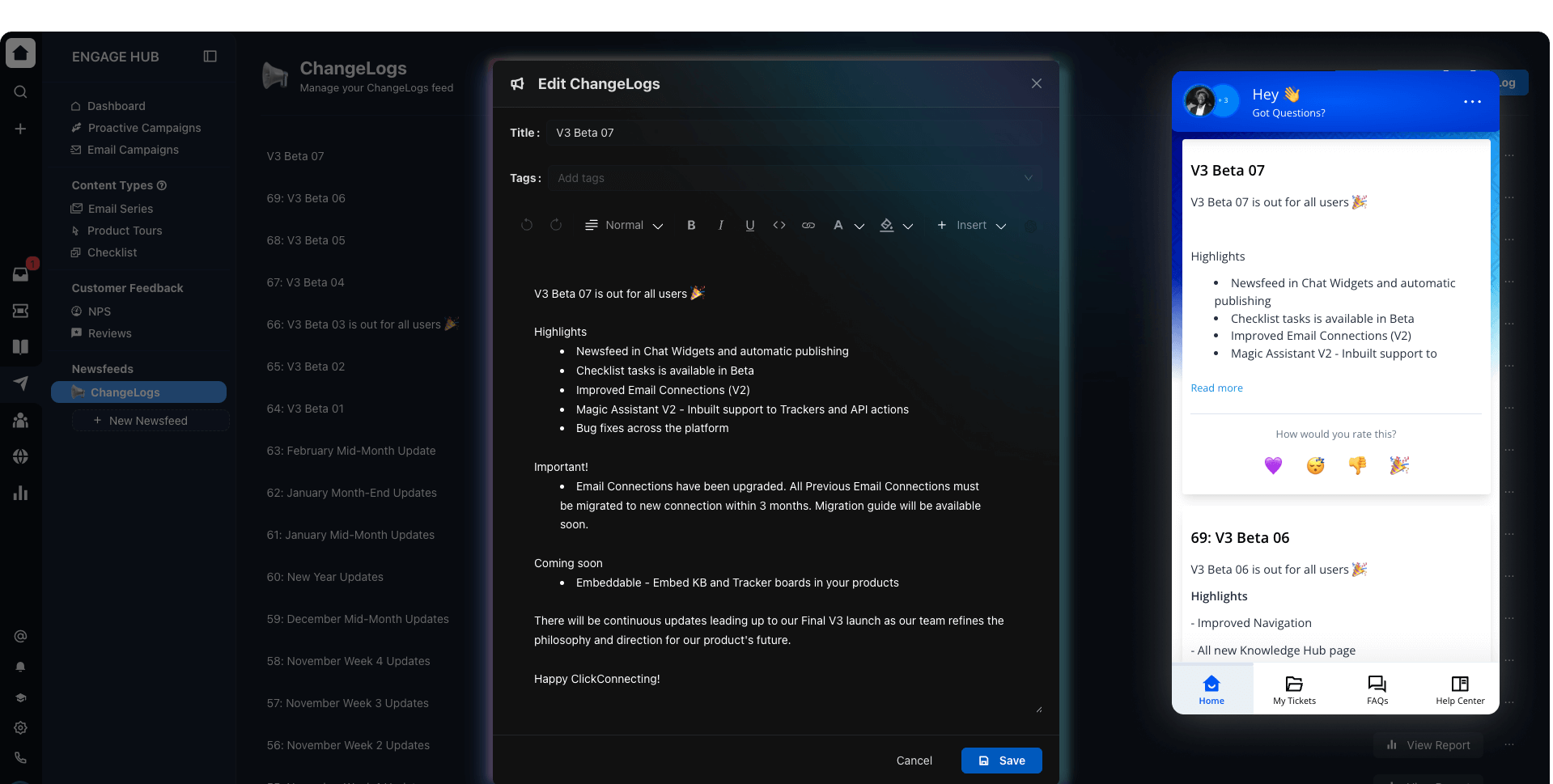
Organizing Common Requests
As a SaaS company, feature requests and bug reports are very common. A bug can be encountered by multiple users, and a feature request could be wanted by multiple users too.
It's important to organize these so that your product team can plan future releases and your dev team can prioritize bug fixes.
At ClickConnector, we use trackers to organize this. The best part is that we can even embed this directly in our product, and our magic assistant can send forms based on customer intent.
If you've read up to this point, congratulations! You've learned about setting up customer support throughout the three phases: discovery, onboarding, and usage. That's great progress.
Now, let's circle back to the title of this article: How I spend less than 10 minutes providing 24/7 support.
We built ClickConnector and use it for our own customer support.
Here's how it works:
First 2 minutes:
Every morning at 9 AM, I receive a daily digest. It provides a summary of unanswered questions and customers who have sent messages.
The next 8 minutes:
I spend this time replying to customers and then training the AI on how to resolve similar cases in the future.
Over time, I've noticed a significant improvement: the AI now answers almost all questions, leaving me to deal with only a few customers who need extra attention.
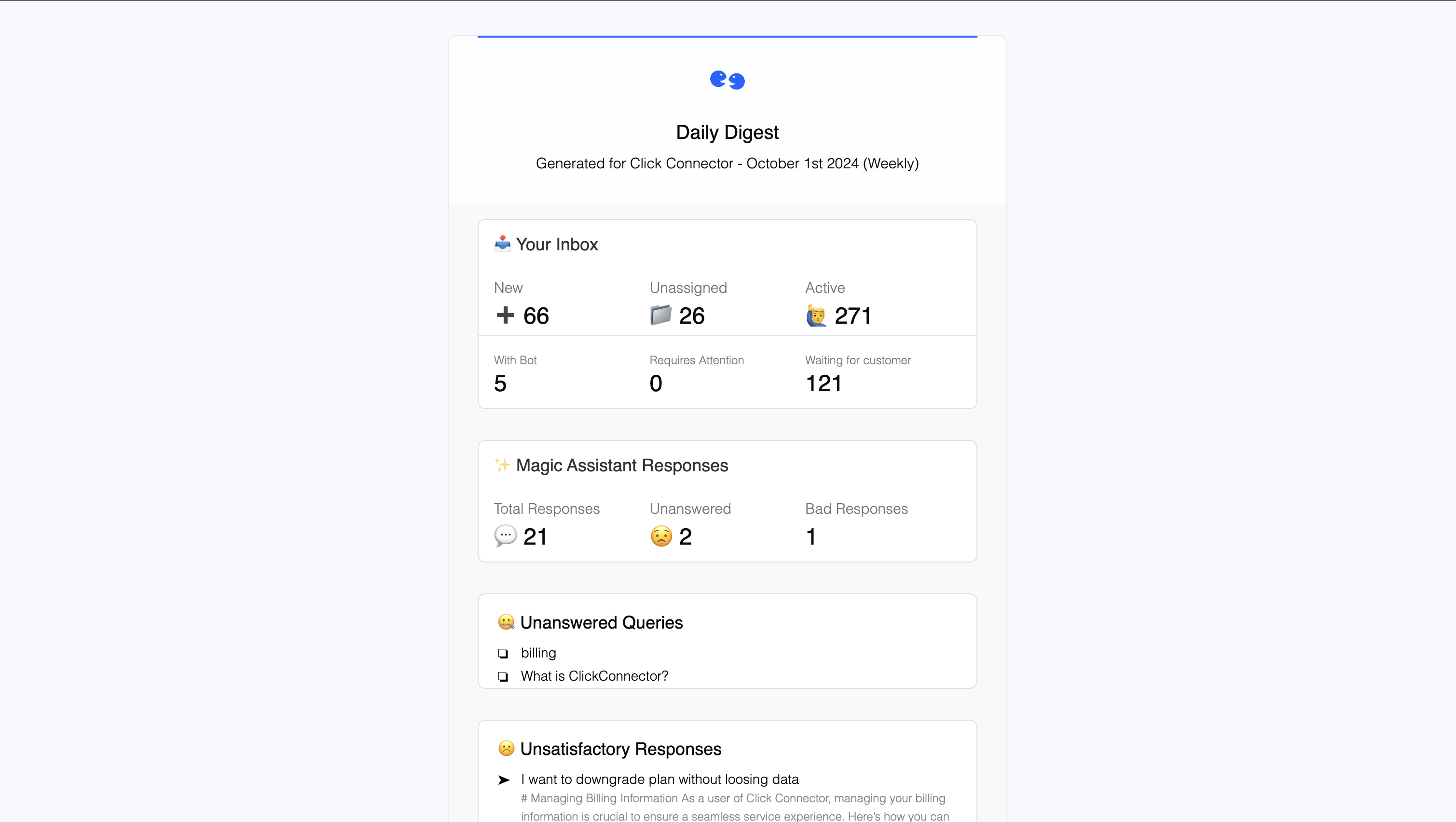
PS: By reviewing the questions sent, you also develop tacit knowledge about onboarding and general customer inquiries. You can use this insight to further improve your onboarding series, product tours, and overall customer experience.
Happy ClickConnecting!
Customer Support Platform
For SaaS Products
Everything you need to provide your customers with a top-notch customer support experience
AI Chatbots Help Desk
Help Centers Feature Requests
Bug Reports Email Drip Campaigns
CheckLists NPS, CSAT
Trackers and more
